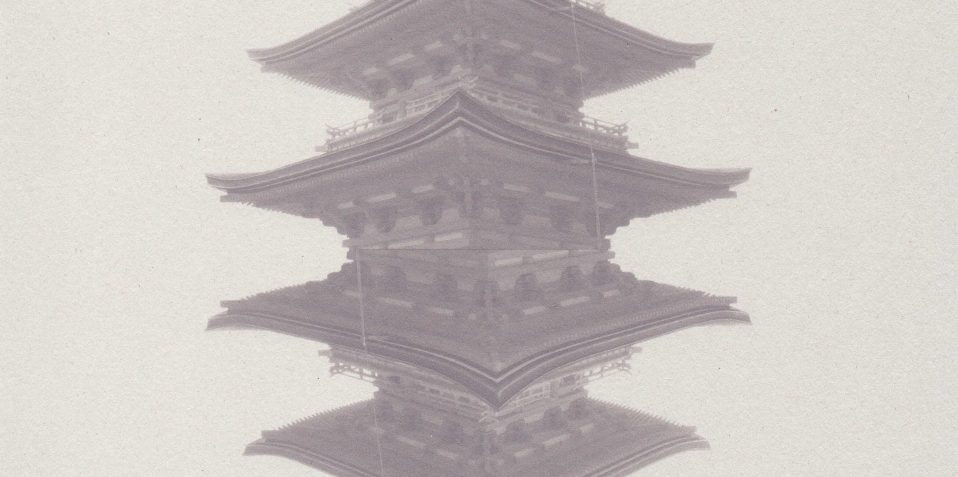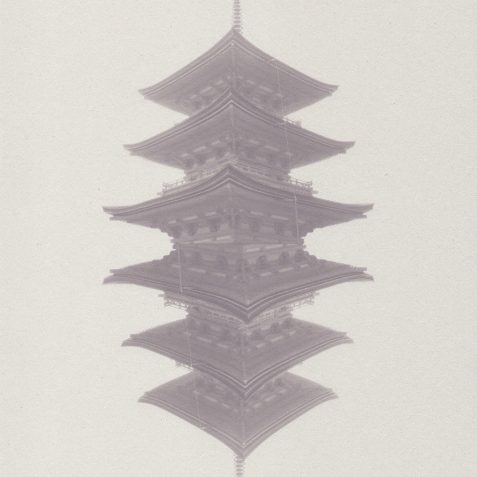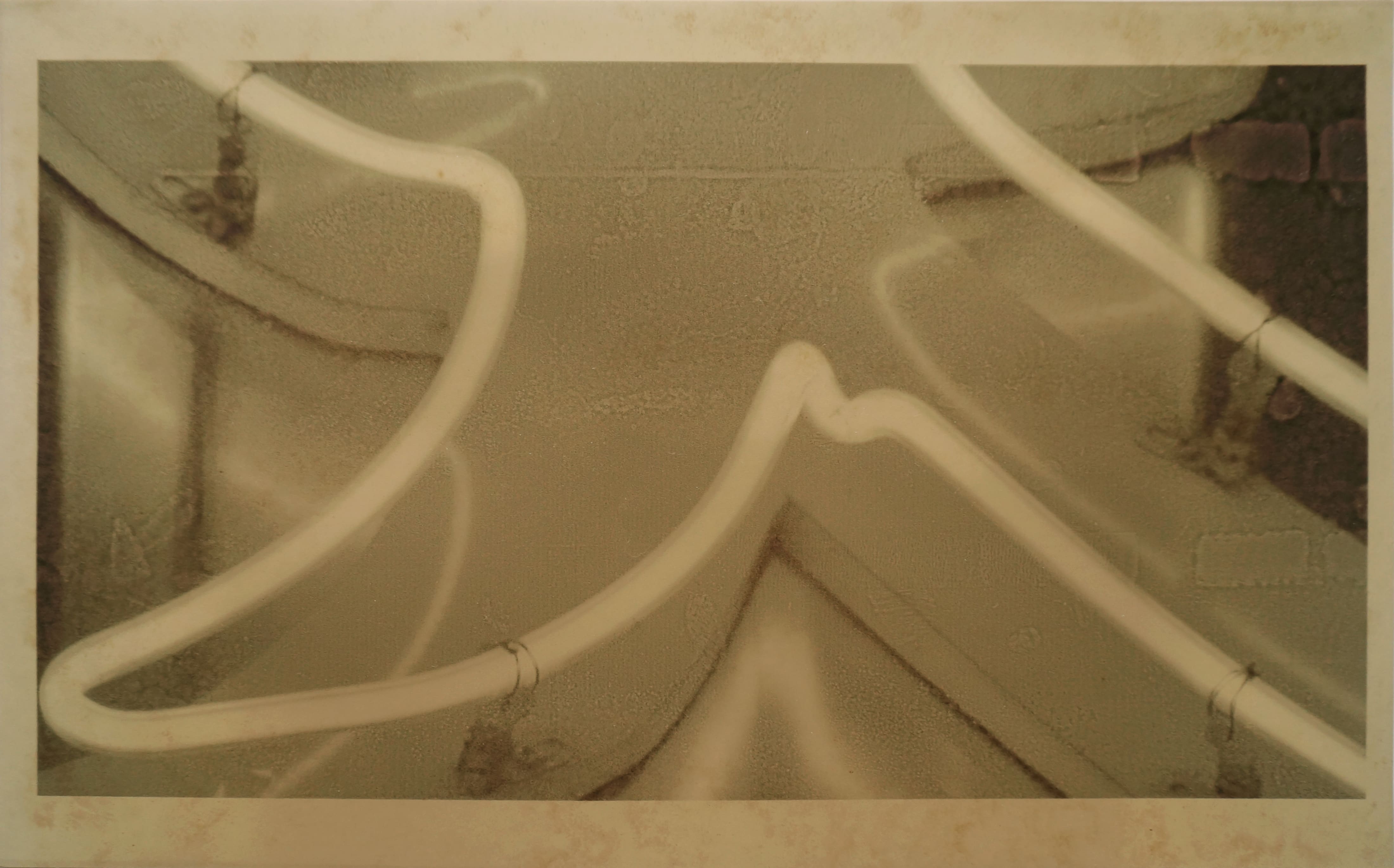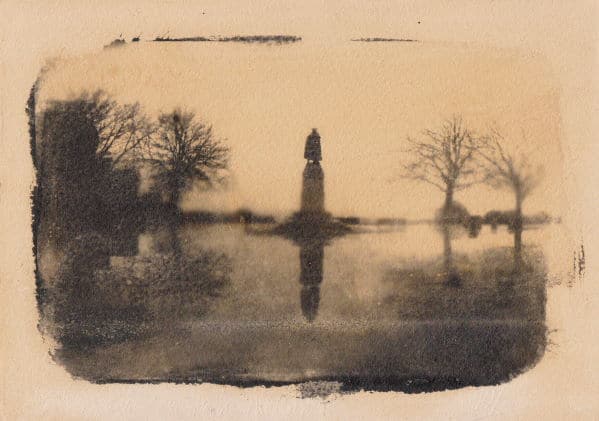Artist in Focus: Alex Prior & Wayne Foskett


This month sees the launch of a new exhibition in our Library Space at e5 Roasthouse. Spirit of Place | Woven Light showcases works by Alex Prior and Wayne Foskett which focus on the theme of light. Wayne works primarily with pinhole photography, engaging with the serendipitous nature of the technique while Alex’s work explores recurring themes of memory, the ephemeral, loss, and transience. We spoke to both artists to find out more about the exhibition, and their artistic practice.
- Images from top: Alex Prior, Liminal Space V11, Alex Prior, Burnt Light 1, Wayne Foskett, Greenwich Park.

Alex Prior
What is your background?
My background is in arts management and project develop/management. I have been photographing seriously since my first trip to Hong Kong in 2012.
What/who has influenced your work?
My work is influenced by travel, but not in the sense of travel photography. I try to seek out often small subtle aspects within a city, the overlooked or ignored.
Along with photographers such as Saul Leiter, Fan Ho, Hiroshi Sugimoto, Jungjin Lee, Michael Kenna and Daido Moriyama I often write down quotes and my own thoughts which in turn influence my outcomes.
What first got you interested in the concept of light?
Light can shape an image, with something as simple as revisiting the same location at differing times of the day allowing for a multitude of interpretations. The work of Saul Leiter is an ongoing influence. His intuition in finding and creating beauty in the abstract through the manipulation of light is fascinating. I find myself seeking out certain conditions and angles to provide a perfect elusive light.
What impact does sense of place have on your work, and what location do you derive most inspiration from?
The sense of a place, the subtle shifts in atmosphere, overlooked details and sense of time through patina form the basis of my work. I often take photographs to document a place and then decide how they fit together later. Two cities in particular evoke strong memories for me; Hong Kong and Tokyo. Both are places constantly in flux and unlike anywhere else. Each new visit allows me to delve a little deeper and peel back another layer.
How do your artworks interact with one another?
Upon first seeing Wayne’s work I was instantly drawn in by the sense of both subtlety and clarity that they exuded. I knew that our practices could overlap and compliment one another if shown together. For Poplar in particular, the wall with Wayne’s anthotypes beneath my large photo gird is presented almost as a single piece. The imagery, materials and presentation create an intriguing statement on the nature of light.

Wayne Foskett
What is your background?
I was born and brought up in Derbyshire. I went to art school in Derby and Bournemouth where I studied photography. I then moved to London, where I worked as a photographic assistant to various editorial and advertising photographers, before working as a photojournalist on a small, east London newspaper. I realised fairly quickly that I wasn’t temperamentally suited to the job, and left to become an actor, of all things, though I continued to produce my own photographs.
What/who has influenced your work?
I suppose, like anyone else, I’m subliminally influenced by all the art I see, but specifically, I’m a great admirer of J. M. W. Turner and Eugene Atget, due largely to their approach to capturing the effects of light, and also Miroslav Tichy, with whom I share an interest in home-made cameras and processing in the bath!
What first got you interested in the concept of light?
I suppose I first became fascinated by light as a phenomenon during a slideshow lecture at art school. A pair of heavy, black drapes had been drawn across the window to block out the strong, late summer sun, but a small chink at the top where the drapes met, had allowed a pinhole image of the busy street outside to be projected across the ceiling, effectively turning the room into an accidental camera obscura. I was astounded – it seemed akin to a sort of miracle!
What impact does sense of place have on your work, and what location do you derive most inspiration from?
I live in Greenwich, where many of my pictures have been taken. I’m particularly drawn to the river, which is wide there when the tide’s in, almost like the sea, and similarly giving an openness to the aspect, making one aware of how even the subtlest of changes in light conditions can have a dramatic, transformative effect on mood and atmosphere.
How do your artworks interact with one another?
Maybe one unifying theme in my work is the way in which light can dissolve form, again, an aspect of Turner and Atget’s work which has always appealed to me. And in the case of the anthotypes, you could say that this paradoxically creative and destructive quality of light is literal – I’ll be interested to see the extent to which they fade during the course of the exhibition.
- Come and see Spirit of Place | Woven Light in The Library Space at Poplar Union, where it will be exhibited until Sunday 14 March 2018.
